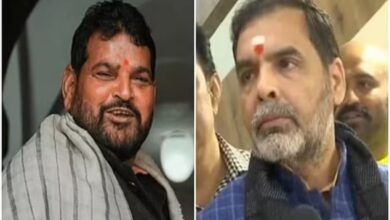Wayanad Worst Landslide. Heavy Rains, Landslides, and Floods Leave Hundreds Dead and Missing!
Wayanad Climate Disaster, How Climate Change Is Destroying Villages.
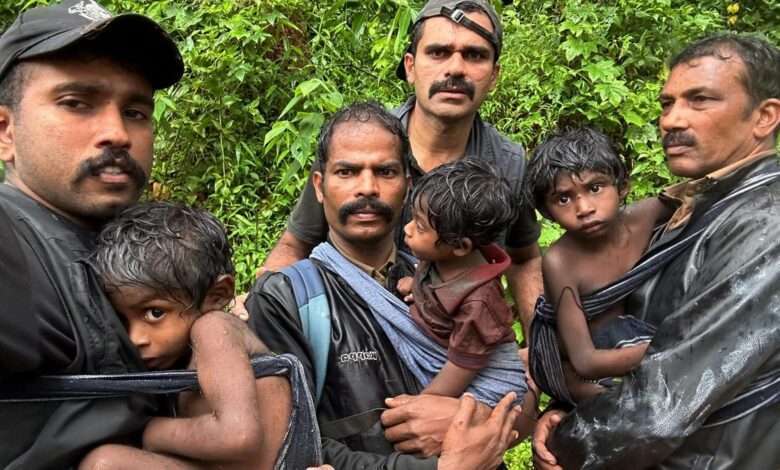
Three villages in Wayanad have been destroyed. Two hundred people have lost their lives, and there are still more than 200 missing people. Heavy rain was falling on the morning of 30 July at 2 am. People were sleeping in their homes, and the flood of sand, big stones, and trees came down. As high as two storeys, the whole village is washed away, and people are buried alive.
After that, at 4 am, the second landslide came. The flood goes there and gets stuck in the river. The river’s water diverts to other places, and destruction is rampant. The flow of this landslide and river was so much that no one could guess how much power it had because the dead bodies found by road were 50-60 km away and by river 12 km downstream.
In Kerala’s history, the worst flood came in 2018. Around 500 people died then. Thousands of crores of property damage on top. In the three days of August, one-third of the year’s rain happened, and now, after the heavy rains in 2024, there is the worst landslide in Kerala’s history.
60% of India’s landslides are in Kerala. And now, due to climate change, the situation is getting worse. Scientists believe that although rainfall is similar to last year, the rain is concentrated in a few days due to climate change. When it rains so quickly, the chances of flooding and landslides increase. The South Asian Arabian Sea is getting warmer and warmer. The weather is becoming unstable as a result. That is why Kerala has more floods, rains, and landslides.
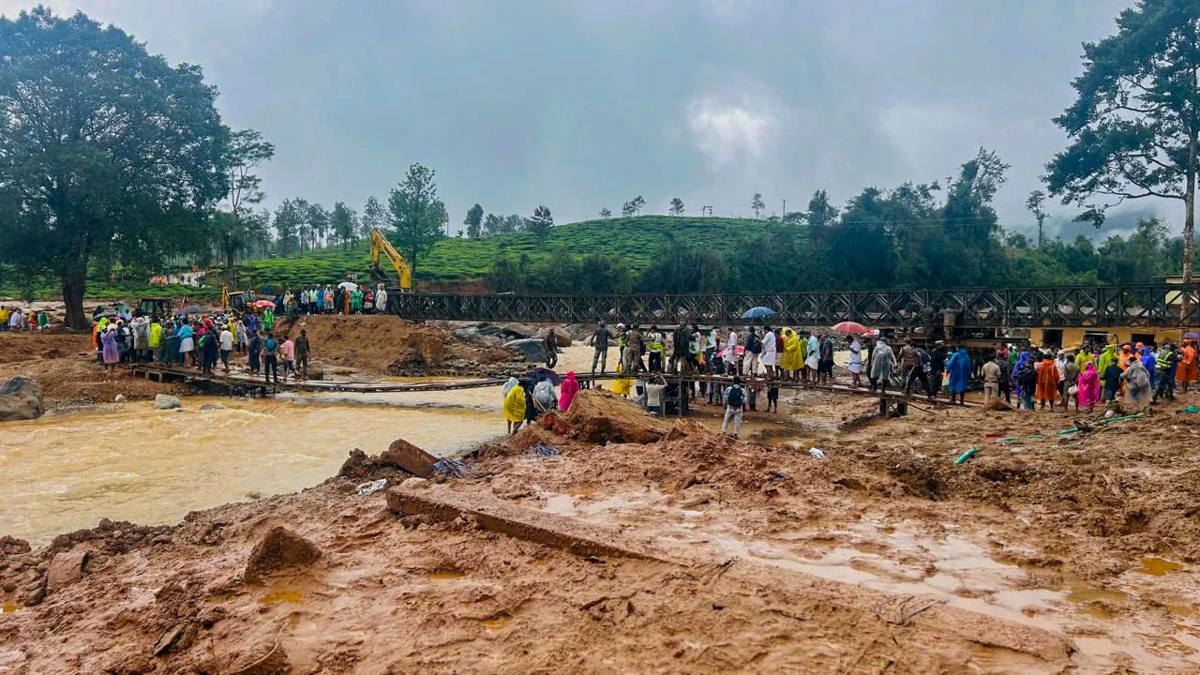
This rain used to fall in the Northern Konkan belt. But now it is moving south due to climate change; there is a risk of loss. Climate change must be recognized, or more life loss may happen. In 2011, WGEEP, the panel of Western Ghats Ecology Experts, chaired by ecologist Madhav Gadgil, the panel said the Idukki and Wayanad districts should be categorised as category 1 grade.
In simple language, these are places where forest land cannot be used for non-forest activity or agriculture. But two years later, Kasturirangan’s report toned down these recommendations. In this case, the origin point of the landslide was in the forest, where human settlement and land exploitation were not happening.
So, imagine the impact of the rain that such a large landslide was created in the forest. And why only talk about Wayanad?
A few weeks ago, 2,95,651 people were displaced because of floods in Assam. Take an instance in Karimganj in Assam. On the night of 19 June, a similar disaster occurred: heavy rain and landslides, and the house collapsed. Five people were sleeping inside the house. 3 children were also inside. The next day, the police found 5 bodies.
The biggest problem is climate change. The world is in a climate crisis. The temperature is rising. But we people are used to thinking that everything is fine. Everyone complains about heat, rain, pollution, and landslides, but the climate crisis is considered boring. But this misunderstanding is quickly cleared when the problem comes to oneself.
And the climate crisis in India is going to get worse. This is just a beginner-level crisis. This year, in the middle of the record-breaking temperatures of the heatwave elections that were held in the last phase of the UP election, 33 polling officers lost their lives to heatstroke. The official figure is that 200 people in the country were dead from heatstroke, and 40,000 heat stroke cases were recorded. But the ground numbers are much higher than this.
In the monsoon season, 12.33 lakh people have been affected by the floods in Assam. Approximately 2,500 villages are underwater. More than 100 people have lost their lives. In UP, 1500 villages have been affected. More so in Bihar. Every year, things are getting worse. No debate on this.
- There was a flood in Sikkim last year.
- Teesta dam destroyed, 15 bridges destroyed. More than 90 people died.
- Joshimath is sinking
- The water shortage in Bengaluru is serious. Karnataka has become dry in the beginning of the year
Ladakh climate activist Sonam Wangchuk kept the climate fast for 21 days to protect Ladakh. Neither did they get the 6th schedule, nor did the people understand that adopting a climate-friendly lifestyle is necessary. So, Ladakh, Bangalore, Joshimath, Delhi, Sikkim, Assam, Kerala, and everything else are resulting from this climate crisis.
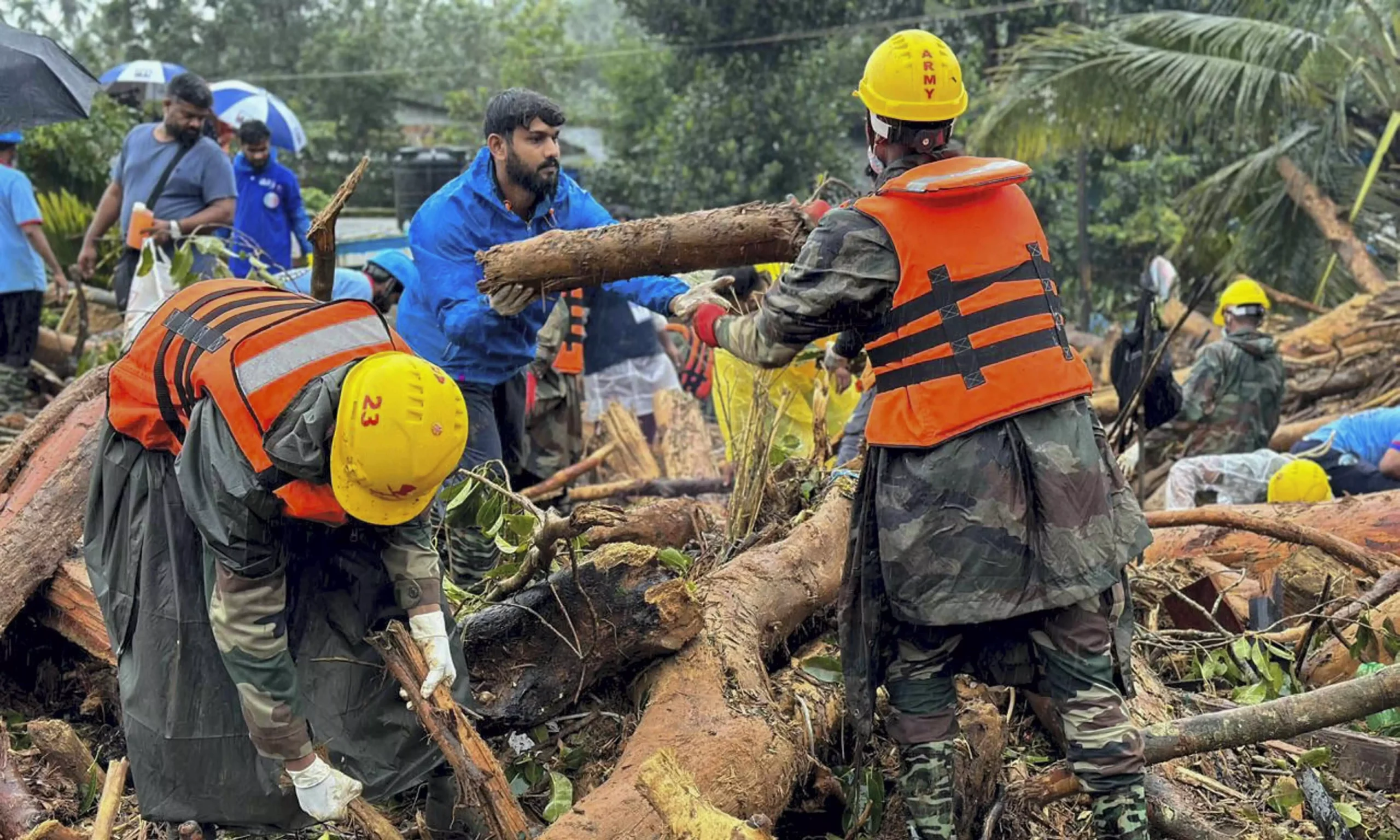
And all this is now just the tip of the iceberg. The situation is going to get worse. How?
The most important aspect of this climate crisis is global warming. It is important to understand the basics. Heat energy comes from the sun and goes to the Earth. A large part of this heat energy is reflected to the Earth. Carbon dioxide, methane, and water vapour absorb and store the Earth’s reflected heat energy. Greenhouse gases are insulators that make the Earth warm. This blanket is necessary so humans don’t return to the Ice Age.
But because of human interference, so many greenhouse gases are reaching the atmosphere. This blanket is turning into a microwave oven. The Industrial Revolution started 200 years ago. New technologies were introduced. Factories were built. Electricity was used. Vehicles were invented. And a huge level of energy was needed.
This energy was obtained from coal, oil, natural gas, and fossil fuels. By burning fossil fuels, carbon dioxide started to be a by-product. In the last 200 years, especially in the last 60-70 years, humans have used fossil fuels tremendously, increasing the amount of carbon dioxide. In 10,000 years, it was 280 parts per million. But in the last 200 years, it has increased to 420 parts per million.
That is a 50% increase. Which was not possible in 10,000 years, but humans did it in 200 years. Due to this extra greenhouse gas, the temperature is rising, and the Earth is 1.2 degrees Celsius warmer today than pre-industrial levels. The temperature has already increased, and experts say this figure will soon reach 2 degrees of warming, putting the world on the verge of destruction.
According to UN projections, by 2050, 200 million climate refugees will be worldwide. Because of 2-3 degrees, the sea level can rise so much in a few years that cities like Kolkata and Bombay can completely sink. This 1.2-degree warming starts a negative feedback loop at a very high level.
Negative Feedback Loop
Arctic and Antarctic sea ice are melting; the less sea ice there is, the less Earth can reflect sunlight. That is, the Earth will retain more heat. Ice reflects more heat. The more the sea retains heat, the more global warming will be boosted. On top of that, a lot of carbon dioxide is trapped in the sea ice. When it melts, it releases more carbon dioxide. Global warming will increase.
Negative feedback loops will start when the temperature rises by 1 or 2 degrees. CO2 levels will rise in oceans. As CO2 levels rise, ocean acidification will start, and coral ecosystems will die. And extreme weather phenomena will also be seen due to the warm sea. As seen in Kerala every other year. Due to global warming, forest fires are increasing. On top of that, we are also deforestation and using pesticides.
Due to agricultural patterns, humans are also spoiling soil health globally. Nitrogen and phosphorus cycles have also been affected. Many scientists have warned that a forest dieback can also happen. That is, the climate stress of the forest ecosystems can cause extinction. If it starts, it cannot stop. Scientists call such processes tipping points.
Many scientists believe Earth has crossed tipping points. If humans today understand their mistakes and stop all activities, then it is not possible to stop many things. Ice sheets are melting; it is difficult to save coral reefs now. So it is already too late. The issues of plastic pollution and air pollution are also vast things happening alongside.
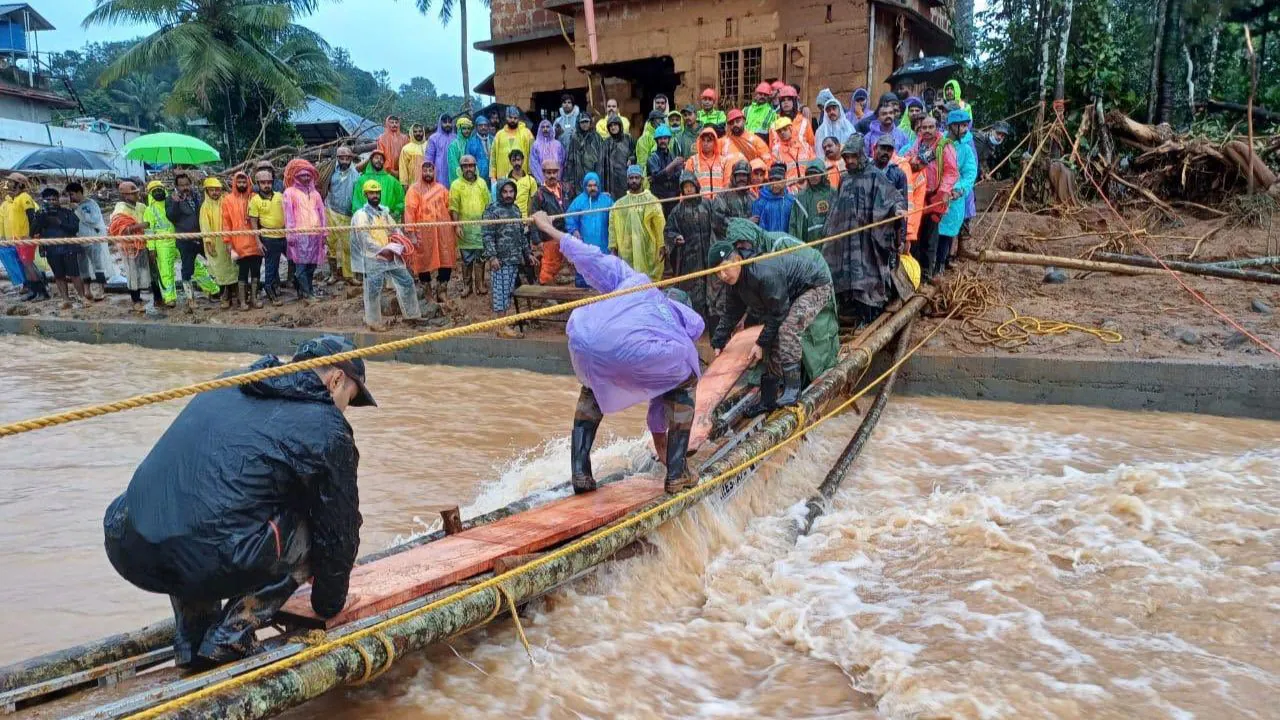
What impact will all these things have on India?
This is not the problem of the West. But the problem is that when this problem is in one place, anywhere in the world, everyone will have to bear the impact of it. According to the Intergovernmental Panel on Climate Change report, IPCC’s vulnerabilities in South Asian countries are high. How?
The Tibetan glaciers are melting at record-breaking levels. And it will continue to be so. In 2013, the heart-breaking Kedarnath flood, 6000 people died. The Himalayas can now become a hotspot for floods. Now, similar glacial flooding in Pakistan is also seen. Floods, droughts, unpredictable rainfall, landslides, and soil health are worsening, crop yields will decrease, and food insecurity can arise. The frequency of Super cyclones is rising.
North India has seen a heatwave already. The UN projection says that by 2050, there will be 200 million climate refugees in 25 years. Shockingly, 45 million of them will be in India. What will the political and economic impact be if migration and climate crisis happen at such a high level?
If people don’t make drastic changes today, then this will happen. Scientists say, write on paper, now it has started. It is already known that the climate is on the path of destruction. It is visible, but the political and corporate elites let this happen because they only care about power and profit. People are also happy. This is a distant future. Nobody should not stress about it. Politicians and business people will keep doing their business.
1997 Kyoto Protocol, Paris Agreement in 2016 United Nations Framework Convention for Climate Change, Multinational corporations nill all these meetings and efforts. Because they only care about their profits. In India, people have a formula. Due to the Supreme Court, everyone knows what this formula is. Buy a bond, win a contract, and keep the environmental clearances in your pocket. No questions asked.
The solution to it is not easy.
The first solution is accepting that the Earth is already approaching the climate crisis.
Then people should think about what they can do. What small steps can be taken?
India needs an immediate green transition, a solid climate policy, and environmental protection. Without public pressure, the government would not do anything. Students protested for NEET; the impact was felt, so parents also had to protest. But cannot be left to die because their age is reduced by 12 years due to pollution.
It is necessary to see problems in the country from a climate lens. The MSP protest is also a protest of climate justice. If MSP is applied to all crops, farmers can diversify crops and grow less water-intensive crops. So, the ecological impact of MSP in this tourism will have to be restricted in eco-sensitive zones. City planning has to be better. A focus is needed on walkable green neighbourhoods and clean transport. A lesson on this can be learned from China on how to handle public transport and air pollution. How to focus on solar power generation.
India needs to reinterpret the debate on growth vs. sustainability and think about sustainable growth. It needs to redefine growth. Climate scientists and activists are talking about de-growth. Don’t follow GDP numbers unthinkingly. Climate needs a holistic approach where environment, air, happiness, and health will matter.
This may sound radical and impossible, but Sonam Wangchuk tries to explain it with his simple message.
‘It is not necessary to leave everything like Gandhi, or to make our own clothes, or to leave everything like Buddha. The way we run towards blind consumerism, that we want more things, we will not recycle anything, it is necessary to rethink that. And at the system level, it is necessary to put pressure on the corporate and the government. Earth has already left the beginner mode. Now, there is a loss that can never be repaired. And if we don’t wake up now, don’t take action, then it won’t take long for the game to be over.’



